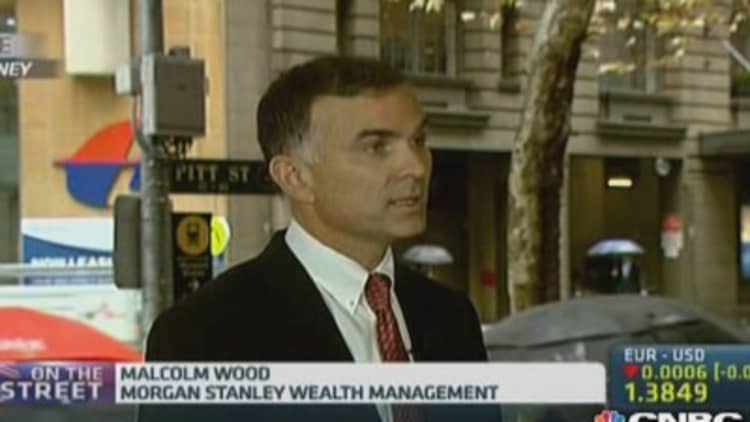
Australia on Thursday posted a second batch of reassuring jobs figures in as many months, raising hopes that the worst may be over for the labor market.
The economy added 18,100 jobs in March, the Australian Bureau of Statistics reported, much better than the 5,000 a Reuters poll was expecting. This follows the whopping 48,200 increase in February, bringing gains so far this year to 88,000.
Meanwhile, the unemployment rate fell to a four-month low of 5.8 percent, compared to a Reuters forecast for 6 percent.
The news gave further strength to the Australia dollar, which jumped half a percent to the highest in almost five months, at $0.9439. The Australian benchmark S&P ASX 200 also rose to a new five-and-a-half-year high for a second straight session.
But analysts noted that the details of the data painted a mixed picture, especially with the fall of 22,100 in full-time employment, which was offset by a 40,200 rise in part-time employment, and coming after the 80,000 surge in full-time employment in February.
Shane Oliver, head of investment strategy and chief economist at AMP Capital, described the details in the job report as "messy" but given the nature of job numbers, which are typically volatile, the picture is still broadly positive.
"It's probably best to focus on the trend and it is showing monthly jobs growth of around 14,000 and unemployment rising only very slowly," he said.
"There is some chance that we may have already seen the peak in unemployment. This is all consistent with a gradual improvement in economic growth this year in Australia," he added.
Analysts at Goldman Sachs also exercise caution over the data, saying: "At this stage, we hesitate to characterize the improvement as more than a 'stabilization.'"
"Looking ahead, we expect jobs growth to continue over the coming months – but at a below trend rate which will see the unemployment rate edge back up to a 10½ year high of 6.2 percent," the investment bank said in a note.
Goldman expects further monetary easing ahead, on tightening fiscal and financial conditions and with the investment cycle in retreat. The Reserve of Australia cut interest rates to a record low of 2.5 percent in August last year, and has withheld its policy since.
"All in all, we still expect a further final rate cut this cycle - on the assumption that both growth and inflation decelerate over the coming months. The official jobs data is clearly working against this view, but we will continue to weigh up the weaker and more-timely indicators on economic activity over the coming weeks," Goldman analysts said.

